Artificial Intelligence Tutorial
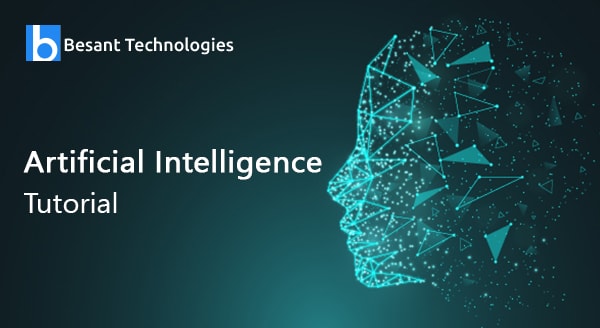
Introduction
In this 21st century, you should always keep yourself updated with the latest technologies. Among the latest technologies, artificial intelligence is one of the emerging technology in the world today. To help you to acquire knowledge of artificial intelligence technology, we have created this informative artificial intelligence tutorial just for you! This artificial intelligence tutorial for beginners will provide you an overview of artificial intelligence technology. In this artificial intelligence tutorial, you will get to know:
- The emergence of artificial intelligence in the modern era
- What the term artificial intelligence exactly means?
- Difference branches of artificial intelligence that are used to create intelligent machines.
- Why artificial intelligence matter in this modern world?
- Categories of artificial intelligence.
- Real-world applications of artificial intelligence.
- What are the job profiles and job responsibilities of artificial intelligence professionals?
- Career scope of artificial intelligence.
In this digital landscape, artificial intelligence (AI) technology is evolving at an unprecedented rate. Every industry including IT, software, healthcare, robotic process automation, hi-tech engineering and more are adopting AI technology to automate their business operations, simplify business processes and maximize sales and revenue. Many tech-giants, such as Google, Facebook, Apple Inc., IBM, Amazon, and Microsoft are investing in the study and building of AI. They are consistently working towards building AI solutions that can be more accessible for enterprises. If you want to attain a generic detailed knowledge about artificial intelligence, then here is some information in this artificial intelligence tutorial to get you started.
Note: This artificial intelligence tutorial for beginners includes the basic to intermediate details about artificial intelligence. Enhance your knowledge with this artificial intelligence tutorial.

What is Artificial Intelligence (AI)?
In this artificial intelligence tutorial for beginners, before delving into the details of the AI, first, we will cover what is exactly artificial intelligence means.
Artificial Intelligence is the technology where machines are programmed in such a way that they imitate human behavior. In other words, it is a simulation of human intelligence in machines that enable machines to perform tasks normally done by humans, such as decision-making, speech recognition, visual perception and more. The AI term can also be applied to the machines that depict characteristics of the human brain such as problem-solving, learning, etc.
In order to embed artificial intelligence characteristics into machines, AI scientists or professionals analyze and research how the human brain thinks, make decisions, learn and work while trying to resolve any problem. Then, using the outcomes based on their research and study, they develop intelligent systems and artificial intelligence software. AI professionals also build various machine learning skills and algorithms that enable machines to learn how to think, reason, solve problems and perform self-corrections as per the requirements.
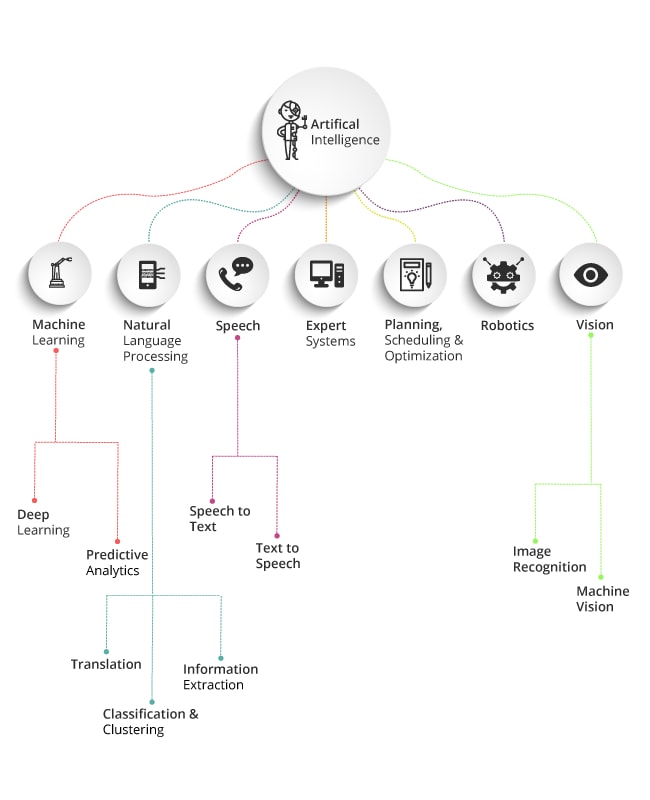
Branch of artificial intelligence
As we have already discussed the definition and meaning of AI. Now, in this artificial intelligence tutorial, you will gain knowledge about the various AI branches (domains).
Artificial Intelligence uses varied subfields to simulate the way the human brain works. Have a look:
Machine Learning:
It is a subset of artificial intelligence that involves the study of statistical models and algorithms that are used by computer systems to perform specific tasks by relying on interference and patterns. In simple words, we can say that machine learning provides the ability to the system to automatically improve and learn itself from the experiences without being programmed explicitly.
Neural Networks:
It imitates the human brain’s cells of interconnected neurons and reinforces information among various units in order to discover connections and find meaning from data.
Deep learning:
It uses a huge amount of computing power and neural networks to search the complex patterns in data, for various apps, including speech recognition, image recognition, etc.
Cognitive computing:
It includes building human alike, natural interactive systems so that it can interpret speech and respond to it.
Computer vision:
It employs deep learning and pattern recognition to understand the content of videos and images. It also enables machines to implement real-time images so that they can understand what’s around them.
Robotics:
It is a branch of artificial intelligence, which further consists of different applications and branches of robots. AI-powered robots are intelligent agents embedded in the machine in a real-world environment. These robots can manipulate the objects by picking, perceiving and moving it.
Natural language processing:
It simply involves understanding and analyzing human language and acknowledging it. By using natural language processing, you can perform various automated tasks, organize the huge chunk of data, solve a wide variety of problems including, Named Entity Recognition, Machine translation, Sentiment Analysis, Topic Segmentation, Speech Recognition, etc.
Fuzzy logic:
Modern computers are based on boolean logic, which is 0 or 1 and “true and false”. But, fuzzy logic is an approach that relies on “degrees of truth”, resembling decision making and human reasoning. It can take distorted, imprecise and noisy input to solve complex problems in all sectors, including banking, medicine, etc.
Expert System:
An expert system is a branch of artificial intelligence that exhibits the decision-making ability just like a human expert. It uses AI technology to simulate the behavior and judgment of human that has the experience and expert knowledge in a particular field.
Note: In this artificial intelligence tutorial, we have discussed the main branches of AI. However, with the technological advancement of AI technology, their domains also get evolved and transformed.
Why is Artificial Intelligence important in the modern world?
Artificial intelligence can be used to do numerous and wide variety of interesting tasks. For instance, it can help artists and designers to make visuals quickly. It can also be used in e-commerce applications to provide automatic suggestions to its users. Apart from this, AI is also used in the healthcare sector for medical diagnosis. These uses are just the tip in the iceberg. In this artificial intelligence tutorial for beginners, the following are key points about artificial intelligence that will tell you how artificial intelligence technology is bringing innovation and transformation to this modern era.
AI eliminates the need for performing tedious tasks
AI is changing the face of modern enterprises. Industries are using AI to do lots of lengthy, tedious, and boring repetitive and routine tasks that were earlier performed by their employees manually. AI eliminates the dull and repetitive manual work by automating the process, driving the productivity of employees. This, in turn, enables employees to focus on other productive areas rather than spending time on tedious, low-skilled and repetitive manual work.
AI adds intelligence to the existing products
Industries use AI in its existing products in order to enhance and improve products. For example, using AI capabilities, Apple Inc added Siri (a virtual personal assistant feature) on iPhone. Similarly, to improve technologies at the workplace or at home, many AI technologies such as conversational platforms, automation, chatbots, and smart machines can be merged with the applications’ data.
AI attains incredible accuracy
Before the evolution of artificial intelligence, it was impossible to achieve a high level of accuracy. Whereas with AI, industries are attaining incredible accuracy. For example, your interactions with Google search, Alexa and Google Photos are all based on deep learning and these applications are getting more accurate the more we use them. In the healthcare sector, AI technology from image classification, deep learning and object recognition are used to diagnose cancer on MRIs with a similar accuracy level as highly advanced radiologists.
AI analyzes deeper data
Using neural networks, AI analyzes deeper and complex data that might have variously hidden layers. A few years ago, creating a fraud detection software with 5 hidden layers was not possible. Since the evolution of AI, the modern technological advancement world is transforming like never before. AI analyzes deeper data and it is used to build a wide variety of intelligent systems, bringing innovation in this modern digital era.
Using progressive learning algorithms, AI let the data do the programming
Implementing progressive learning algorithms, AI enables the data to do the programming itself. AI finds regularities and structure in data in order to let the algorithm acquire skills. Algorithms can teach itself various things like, what product to recommend to the uses in an e-commerce platform, how to play chess, etc.
Our artificial intelligence tutorial for beginners listed almost all the important points regarding why AI matters in this modern era. However, there are some other reasons as well such as AI gets the most out of data, AI automates repetitive learning and discovery through data, etc.
Types of Artificial Intelligence
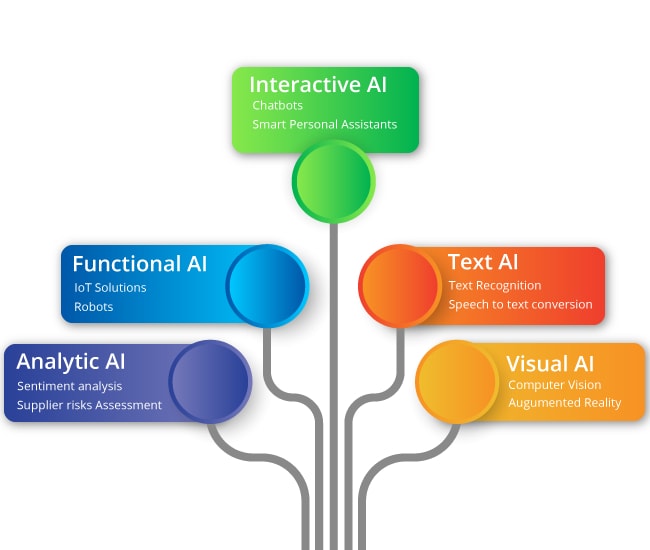
Artificial intelligence is classified into 2 categories: weak AI and strong AI. In this artificial intelligence tutorial, let’s understand what these terms actually mean.
Weak AI
Weak AI is also termed as narrow AI. This AI system is trained and designed for specific types of tasks. It only responds according to the given instructions. For example, Alexa and Siri are weak AI. When you instruct Siri to play a song, it responds by playing a song only. It exactly responds according to the given instructions.
Strong AI
Strong AI acts as the brain of a human. It possesses cognitive abilities to carry on unfamiliar commands and tasks. Using human intelligence, it can find a solution to the problem. Examples of strong AI are translations between languages, speech recognition, visual perception, decision making, etc.
Applications of AI: Real-time use cases in different sectors
In our artificial intelligence tutorial, we have covered the real-world use cases that will tell you the intensity of how AI technology is being widely used in different sectors of the industries.
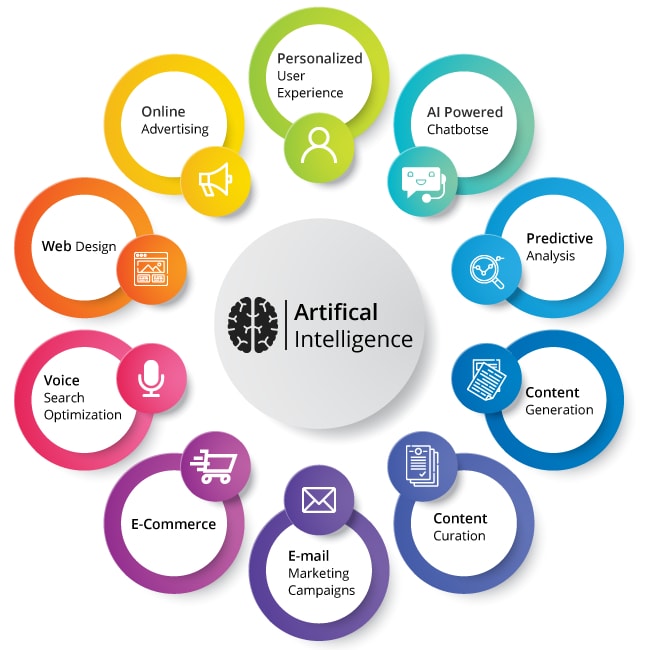
AI in Healthcare
Healthcare businesses leveraging artificial intelligence technology. Using AI, they are streamlining their business operations, increasing their business efficiency. AI-enabled technology helps the healthcare sector in the following ways:
- It helps pathologists analyzing tissues and blood samples of the patients. They will be able to diagnose the patients more accurately.
- It also helps in making business-related decisions.
- It also helps scientists and doctors in their research and studies on medicines.
- Various AI-powered applications are launched by healthcare sectors, bring healthcare easily accessible to the people.
AI in business
Real-time reporting, processing of voluminous data, accuracy are some of the vital elements of every business that helps them in making important decisions. Various fields of artificial intelligence, such as chatbots, automation, adaptive intelligence are helping various businesses in smoothening their business operations. For example, many businesses have a help desk on their websites or applications. This AI-enables help desk pops up the chat window and asks you relevant questions every time you visit the website. You can ask questions in their help desk and you will get an instant response in no time. It facilitates a great user experience. In this way, you can reach the right audience at the right time.
AI in autonomous vehicles
A lot of advancements, such as LIDAR, cameras, long-range rada, etc. has been made in the segment of the autonomous vehicle. These inventions and advancements are possible only because of artificial intelligence technology. Building autonomous vehicles require the processing of a huge amount of complex data and derive the meaning insights from that data, and the AI exactly does the same for the autonomous vehicles segment.
Some of the usage of AI-powered autonomous vehicles:
- When the car is running low in the fuel, the autonomous vehicle directs the car to the recharge station or gas station.
- It can find the quickest route based on traffic conditions on the road.
- To be able to become more interactive and advanced with the passengers, it can be embedded with the speech recognition system.
- It can also be used as a virtual assistant or natural language interface technologies.
AI in the education sector
AI is widely used in the education system to simplify and automate complex processes.
It can be used to check multiple-choice questions, automate the grading system, testing fill-in the blanks and much more.
AI in research
Microsoft is using artificial intelligence to research land-use patterns with terrain maps in order to make informed decisions associated with the lands. Also, these kinds of information are used by scientists to preserve an entire ecosystem and biodiversity.
Job Profiles in the Artificial Intelligence Field
In this artificial intelligence tutorial for beginners, we have already informed you about AI, its branch, applications of AI and types of AI. Now comes the job profiles in the AI field. This section of the artificial intelligence tutorial will tell you the different job profiles in the field of AI that you can apply for.
Artificial intelligence is an emerging field, embracing various opportunities for IT professionals. A popular job search site- Indeed says that over the last 3 years, the demand for artificial intelligence has got double overtime. The number of AI jobs has increased by 122 %.
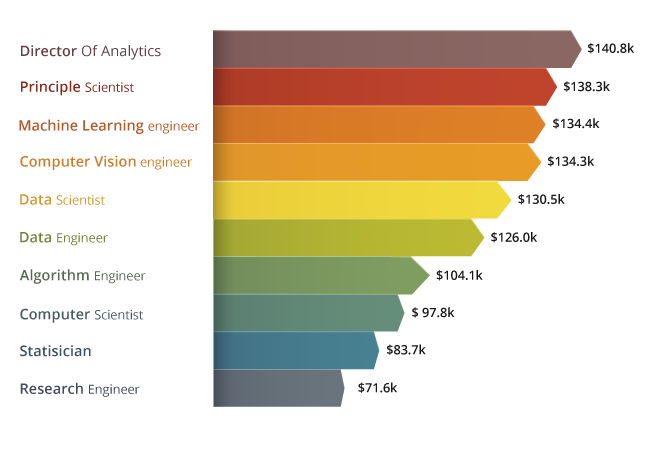
Have a look at different job profiles of AI:
Data Scientist
Data Science is a blend of multi-disciplinary methods that implements processes, scientific methods, algorithms to extract insights and knowledge from unstructured and structured data.
What data scientists do?
- Using AI, statistics, mathematics and computer science, a data scientist can process voluminous raw data in order to extract meaning insights.
- The data scientists basically are the data specialists who write code and build scalable data pipelines.
- They are experts in various skills, including natural language processing, video processing, image processing, speech analytics, material simulation, medicine simulation and more. Altogether, these skills enable data scientists to crack complex data in certain scientific disciplines.
Average salary: The average salary of data scientists is $95,520 USD per annum.
Machine learning engineer
Don’t confuse machine learning with AI. Machine learning and AI is not the same, though machine learning is commonly used alongside AI. Machine learning is basically the application of AI that enables machines to learn and improve themselves from their experiences and perform specific tasks without being directed explicitly.
What machine learning engineers do?
- Machine learning engineers are the programmers that use artificial intelligence technology to build intelligent machines that possess learning skills and using these skills, the system can apply that knowledge without requiring any specific direction.
- They collect data and run it on various machine earning algorithms to find out the common errors and issues. Then, they analyze the gathered data to identify the patterns in how, when and why in order to address the errors and issues.
- Using a programming language, they run machine learning experiments with machine learning libraries and build and deploy the machine learning models.
Salary: Machine learning professionals can earn up to $114,520 per annum.
Artificial intelligence engineer
In this tutorial, we have already discussed AI technology. Let’s understand the job roles of AI engineers.
What artificial engineers do?
- AI engineers extract data efficiently from a wide range of sources. They also test and build machine models. After that, using APIs and embedded code, they deploy these models to build Ai-infused applications.
- AI engineers implement unique design challenges by working with various infrastructure types, including cloud systems, on-premises systems, and chips (FPGAs, GPUs, etc.).
- They understand the process of model building, feature engineering, and model validation and support continuous development pipelines.
- They decide when the model is ready for deployment and also monitors these models in terms of accuracy.
Salary: An AI engineer can earn around $112,104 per annum.
Business intelligence developer
Business intelligence is a set of architectures, processes, and technologies that transform raw data into processed information, providing actionable insights into businesses.
What do business intelligence developers do?
- Business intelligence developers invest their time in planning, analyzing and researching the solution of the problem within the organization.
- They are also responsible for data aggregation from varied sources in the data warehouse. They also design advanced-level enterprise solutions for huge multi-dimensional databases.
Salary: The average salary of a business intelligence developer is $93,345 per annum.
Big data architect/engineer
Big data is a field where the voluminous and complex data is being analyzed and systematically extracted in order to produce meaningful outcomes. These kinds of data cannot be handled by traditional data-processing application software.
What do big data engineers do?
- Big data engineers create the requirement analysis, determine the platform, design the technical architecture and application design. They build, develop, test and deploy the proposed solution.
- They handle the full application development cycle of the Hadoop solution.
Salary: The average salary of big data engineers is $153, 234 per annum.
Conclusion
The career of AI Engineers
This artificial intelligence tutorial is specifically created for your students so that they can create value out it and enhance their knowledge. Opting artificial intelligence course will promise to take you to the road map of success in your professional career. According to the trusted surveys, AI will create almost 2.8 million jobs by 2025. Many tech giants such as Google, IBM, Facebook, Accenture, KPMG, Dell, HP and more are hiring AI engineers. Not only big industry leaders but small and medium enterprises are also paying a whopping amount to AI engineers; in return, they expect AI engineers to grow their business productivity.
Our Artificial Intelligence course is designed by world-class AI experts, as per industry best practices. Throughout the course, you’ll master on the AI concepts like Restricted Boltzmann Machine, SoftMax function, Autoencoder Neural Networks and work with libraries like TFLearn and Keras. With our hands-on training with real-time projects, you’ll become AI experts in this technological advancement era.


AI in social media
These days everyone is using social media to stay connected with the outside world. In social media applications like Facebook, Snapchat, Instagram, Twitter, the majority of the decisions are influenced by AI, such as upgradations, notifications, history, interactions and more. When you visit these websites, your information is being analyzed and stored. This, in turn, enables these applications to deliver personal users’ experience.